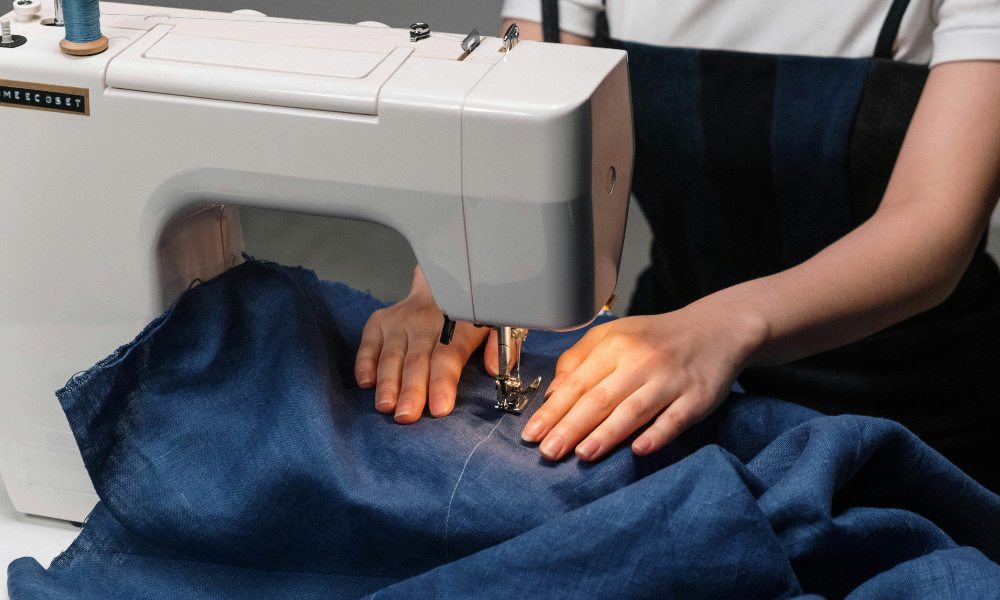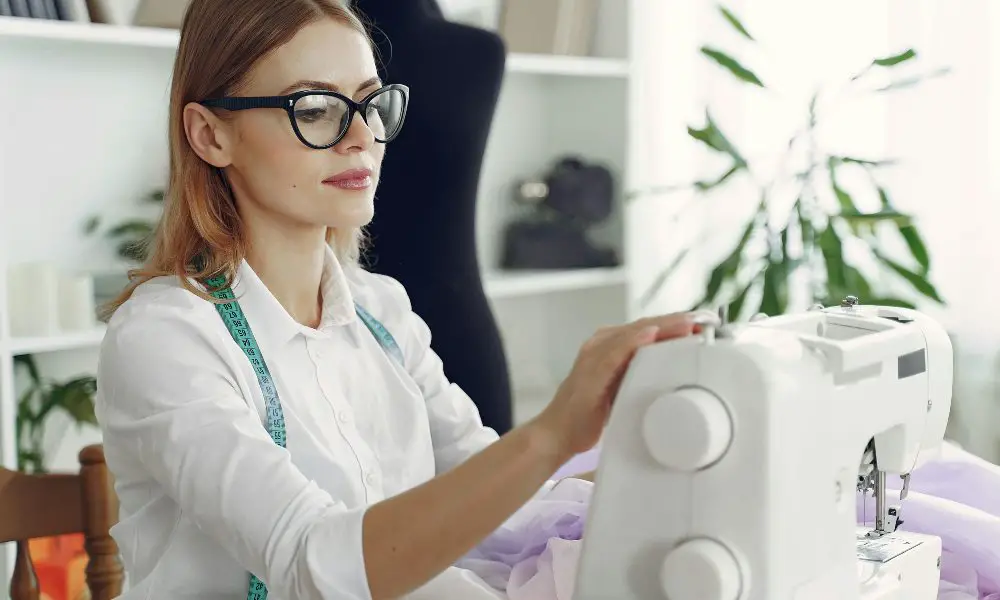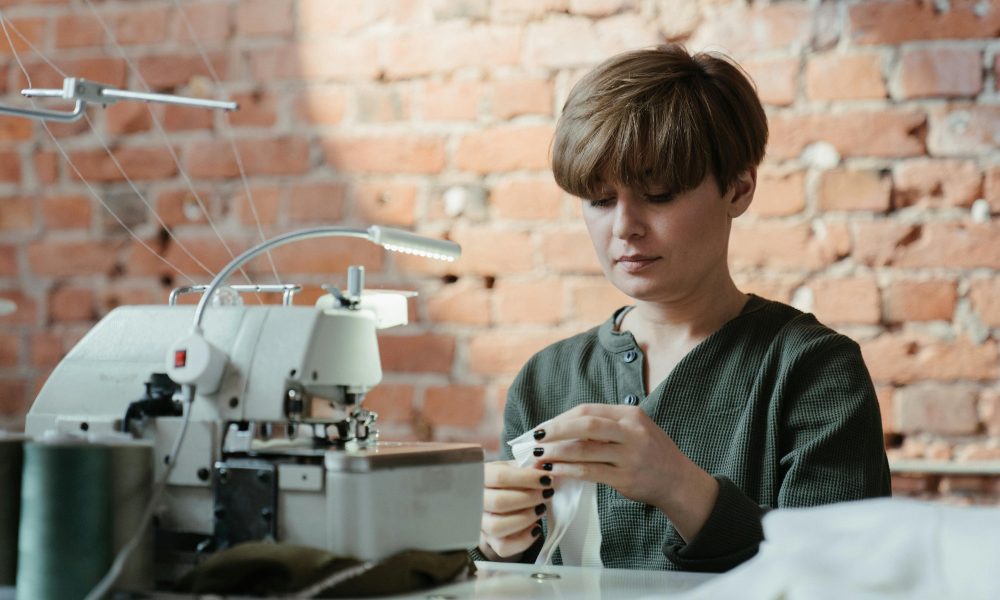Have you ever gazed upon a breathtaking couture gown or a meticulously crafted quilt and wondered, “How did they achieve such perfection?” The answer lies in the remarkable world of sewing machines. These ingenious devices have revolutionized the art of needlework, allowing us to create garments, home decor, and intricate sewing projects with precision and efficiency. But mastering the sewing machine is more than just threading a needle – it’s a journey of discovery, patience, and creativity. Are you ready to unlock the full potential of your trusty sewing companion?
In this comprehensive guide, we’ll delve into the intricate world of sewing machines, unraveling the mysteries beneath their sleek exteriors. From understanding the anatomy of these remarkable devices to exploring advanced techniques, we’ll equip you with the knowledge and skills to transform mere fabric into masterpieces. Whether you’re a seasoned seamstress or a newcomer to the world of needlework, this article will be your ultimate companion on the path to sewing excellence.
Getting to Know Your Sewing Machine
Before you can harness your sewing machine’s true power, it’s crucial to understand its anatomy and establish a strong foundation. As with any instrument, becoming acquainted with the different parts and comprehending their roles is the initial stage in achieving expertise.
Understanding the Anatomy
At first glance, a sewing machine may appear daunting, with its intricate mechanisms and array of knobs and levers. However, each element serves a specific purpose, working harmoniously to create flawless stitches. The needle, presser foot, bobbin case, and feed dogs are just a few essential components that you’ll need to acquaint yourself with. Consult your machine’s manual to understand its unique features and capabilities comprehensively.
The needle is the heart of your sewing machine, responsible for piercing the fabric and forming the stitches. Choosing the correct needle size and type for your project is essential to achieve professional results. The presser foot, on the other hand, holds the fabric in place and guides it through the needle plate, ensuring uniform stitch formation.
Beneath the needle plate lies the bobbin case, where the lower bobbin thread is housed. This crucial component works with the needle thread to create the interlocking stitches that hold your fabric together.
Setting Up for Success
Proper setup is the key to achieving professional-quality results. Start by threading your machine correctly, ensuring the needle, bobbin, and upper thread are appropriately aligned and tensioned. Adjusting the stitch length and width according to your project’s requirements is also crucial. Don’t overlook the importance of choosing the right needle and thread type, as they can significantly impact the quality of your stitches and the longevity of your machine.
Initially, threading a sewing machine can be intimidating, but it becomes easier with experience and repetition. Follow the thread path carefully, ensuring the thread is correctly seated in the tension discs and thread guides. Adjusting the thread tension is a delicate balance – too tight, and you’ll experience thread breakage; too loose, and your stitches will be uneven.
Mastering the Basics
With a solid grasp of your sewing machine’s fundamentals, it’s time to embark on your stitching journey. Mastering the basics will lay the foundation for more advanced techniques and sewing projects.
The Fundamental Stitches
The fundamental stitches of sewing are the straight stitch and the zigzag stitch. These two stitches serve as the foundation for all sewing projects. The versatile straight stitch is a workhorse, indispensable for seaming, topstitching, and various construction techniques. Meanwhile, the zigzag stitch adds durability and stretch to your projects, making it ideal for finishing raw edges and appliqué work.
Achieving a straight stitch requires precise control over your machine’s settings and fabric handling. Maintain a consistent seam allowance by guiding your fabric along the needle plate markings or investing in a specialized seam guide. For the zigzag stitch, experiment with different stitch widths and lengths to create unique decorative effects or accommodate stretchy fabrics.
Controlling Your Stitches
Achieving consistent, professional-looking stitches requires precise control over stitch length and width. Longer stitches are suitable for basting or gathering, while shorter stitches provide strength and durability. You can produce ornamental designs or adapt to varying fabric types by modifying the stitch width.
Most modern sewing machines feature a stitch selector or length control, allowing you to choose the perfect settings for your project. Pay close attention to these adjustments, as they can make or break the outcome of your stitching.
Fabric Handling Techniques
As you gain confidence with your machine, you must develop a deft touch to guide the fabric through the needle plate. Learn to pivot and turn corners smoothly, maintain consistent seam allowances, and avoid puckering or distortion.
Invest in specialized presser feet, such as a walking or quarter-inch foot, to aid in fabric handling and achieve precise results. Additionally, practice techniques like pin basting or using pattern weights to keep your fabric layers aligned and stable.
Exploring Advanced Techniques

Once you’ve mastered the fundamentals, it’s time to expand your sewing horizons and explore the vast array of advanced techniques your machine has to offer.
Decorative Stitches and Embellishments
Modern sewing machines come equipped with an impressive repertoire of decorative stitches, opening the door to endless possibilities for embellishment. Try out complex designs, glossy stitches, and fundamental embroidery to create a three-dimensional effect and enhance the texture of your crafts.
Those passionate about embroidery should consider investing in a dedicated embroidery machine. These specialized devices allow you to easily create intricate designs, transforming ordinary fabrics into works of art.
Working with Specialty Fabrics
Each fabric type presents unique challenges, from delicate silks to sturdy leathers. Mastering the art of sewing with specialty fabrics requires adjusting tension, presser foot pressure, and potentially investing in specialized accessories or attachments.
When working with knits or stretchy fabrics, a walking or even-feed foot can be a game-changer, preventing the fabric from stretching or distorting as it passes through the machine. Consider using a Teflon foot or specialized leather needle for leather or vinyl to prevent skipped stitches and damage to your materials.
Quilting and Patchwork
A dedicated quilting machine or attachment can be a game-changer for those passionate about quilting and patchwork. Learn to navigate intricate patterns, match seams precisely, and create stunning quilted masterpieces that will be cherished for generations.
Quilting machines often feature larger throat spaces and extended arm lengths, allowing you to quickly maneuver and stitch larger quilts. Invest in specialized quilting feet, such as a walking or free-motion foot, to achieve professional-quality results.
Troubleshooting and Maintenance
Even the most experienced sewists encounter challenges. It is possible to maintain the smooth operation of your sewing machine with troubleshooting and proper maintenance.
Common Sewing Machine Problems
Sewing machine problems, from thread bunching and skipped stitches to tension issues, can be frustrating but often have simple solutions. Please familiarize yourself with common problems and their remedies, such as adjusting tension, cleaning the bobbin area, or replacing a dull needle.
If you’re experiencing skipped stitches, check your needle – a dull or bent needle can cause severe stitch quality issues. Thread bunching may indicate a tension problem or a clogged bobbin case. Don’t hesitate to consult your machine’s manual or seek professional assistance if the issue persists.
Caring for Your Machine
Ensuring your sewing machine is well taken care of and properly maintained is crucial for extending its lifespan. Follow the manufacturer’s recommendations for cleaning and oiling your machine. Additionally, learn the best practices for storing and transporting your machine to protect it from dust, moisture, and potential damage.
Regular cleaning is crucial to prevent lint buildup, which can cause tension issues and stitch quality problems. Use a small brush or compressed air to remove accumulated debris from the bobbin area, needle plate, and feed dogs. Consult your manual for specific oiling instructions, as over-oiling can be as detrimental as under-oiling.
FAQs:
What is the best sewing machine for beginners?
Look for a user-friendly mechanical sewing machine with basic stitches and easy threading. Popular beginner-friendly options include Singer Start 1304, Brother CS6000i, and Janome Magnolia 7318.
How do I prevent the fabric from bunching up while sewing?
Fabric bunching can be caused by incorrect tension, a dull needle, or improper fabric handling. Ensure your tension is balanced, use a new needle, and guide the fabric gently without pulling or pushing too hard.
Can I sew different types of fabric with the same needle?
Using the appropriate needle type for the fabric you’re working with is generally recommended. For instance, use a ballpoint needle for knits, a sharp needle for woven fabrics, and a leather needle for heavier materials like leather or vinyl.
How often should I clean and oil my sewing machine?
Regular maintenance is crucial for your machine’s longevity. Clean it after every project to remove lint and debris, and follow the manufacturer’s guidelines for oiling, which may be every few months or after a certain number of hours of use.
Conclusion
As you embark on this thrilling sewing journey, remember that mastery takes time and practice. Embrace the challenges, celebrate your successes, and never stop learning. Your sewing machine is a powerful tool, capable of transforming simple fabrics into masterpieces that reflect your unique creativity and style.
Now, it’s your turn to ask yourself: What will be your next sewing adventure? Will you tackle a couture garment, an intricate quilt, or perhaps a home decor project that showcases your newfound skills? Whatever path you choose, approach it confidently, armed with the knowledge and techniques you’ve acquired from this comprehensive guide.
Remember, the sewing community is welcoming and supportive. Join local sewing classes or online forums to connect with fellow sewing enthusiasts. From others, you can acquire valuable tips and tricks, broaden your sewing knowledge, and enhance your skills. Don’t be afraid to reach out and connect with others who share your passion for sewing.
***
Main image: pexels




